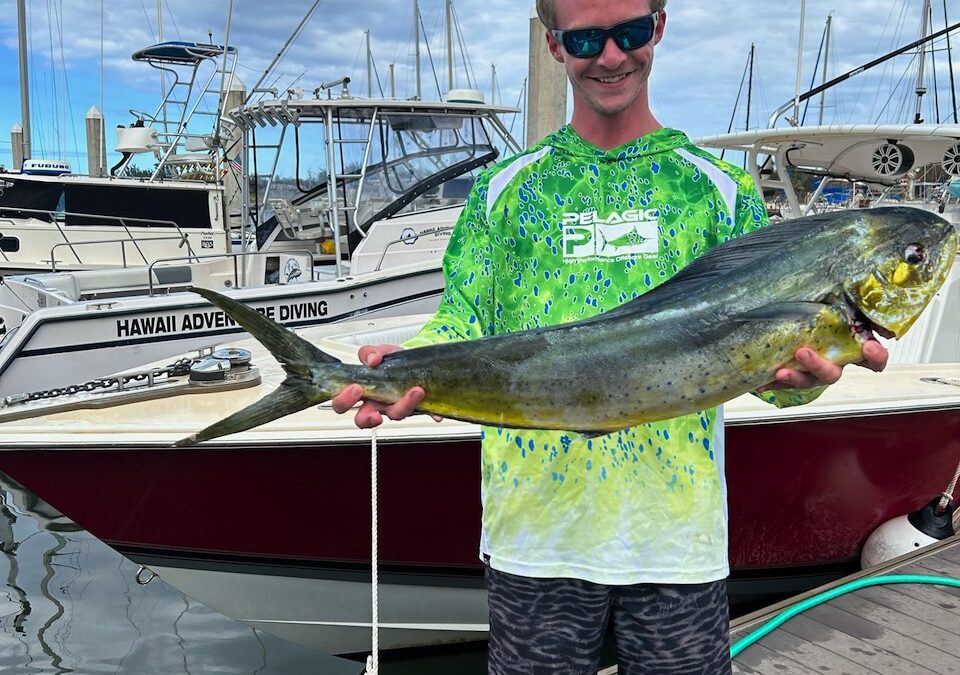Fishing is more than just a pastime—it’s a passion that unites people of all ages around the thrill of the catch. One of the most exhilarating catches for any angler is the vibrant and elusive Mahi-mahi, known for its dazzling colors and spirited fight.
If you’re looking to add this beautiful fish to your list of catches, here’s your comprehensive guide to fishing for Mahi-mahi at the marina.
Mahi-mahi, also known as dolphin fish or dorado, are among the most sought-after fish in the ocean due to their striking appearance and delicious taste.
These fish are characterized by a bright array of colors—golden on the sides, bright blues and greens on the sides and back, and white on the underside. They can weigh anywhere from 15 to 50 pounds, making them a formidable opponent on the line.
Timing is crucial when targeting Mahi-mahi. These fish are most commonly found in warmer waters, making spring through early fall the optimal fishing seasons in most locations.
They prefer temperatures ranging from 70 to 85 degrees Fahrenheit, which usually means heading out on sunny, calm days when the surface of the water heats up.
To successfully catch Mahi-mahi, you’ll need the right equipment. A medium to heavy rod with a spinning or baitcasting reel capable of handling 20 to 50-pound test line is ideal. S
ince Mahi-mahi are known for their fighting ability, a strong but flexible rod is necessary to handle the vigorous pulls. Additionally, colorful lures and live baits such as squid, flying fish, or mackerel can increase your chances of attracting these visually oriented predators.
Mahi-mahi are often found near floating objects or any structure that holds bait fish. They are pelagic fish, meaning they are found not in the depths of the ocean, but in the open water. Look for weed lines, floating debris, or buoys, where smaller fish might gather. Mahi-mahi could be lurking nearby, waiting to strike unsuspecting prey.
Trolling is one of the most effective techniques for catching Mahi-mahi. This involves pulling a line with a hooked bait through the water behind a slowly moving boat. You can also try sight casting, which is spotting the fish from the boat and casting directly to it. Once hooked, Mahi-mahi are known for their acrobatic jumps and relentless energy, so be prepared for a challenging but exhilarating fight.
Once you’ve managed to reel in a Mahi-mahi, handling it properly is crucial. These fish need to be iced immediately after capture to preserve their flesh and maintain its high quality.
Mahi-mahi are not only a fantastic sport fish but are also highly prized for their delicious, firm meat which is perfect for grilling.
While fishing for Mahi-mahi is a thrilling experience, it’s important to practice responsible fishing techniques. Adhere to local regulations regarding size and bag limits.
Practicing catch and release with smaller or spawning fish can help ensure future populations for others to enjoy.
Mahi-mahi fishing is a rewarding experience that combines skill, patience, and a bit of luck. With the right gear, a good understanding of the fish and their habits, and a bit of practice, you’ll be sharing your own stories of the one that didn’t get away at the dock.
Whether you’re a seasoned angler or a novice excited about your first catch, the rush of landing a Mahi-mahi is an unforgettable experience that keeps fishermen coming back for more and more.
Happy Fishing!
This blog post provides a detailed overview of Mahi-mahi fishing, suitable for both beginners and experienced anglers looking to refine their technique and learn more about this unique species. Mahi-Mahi!

